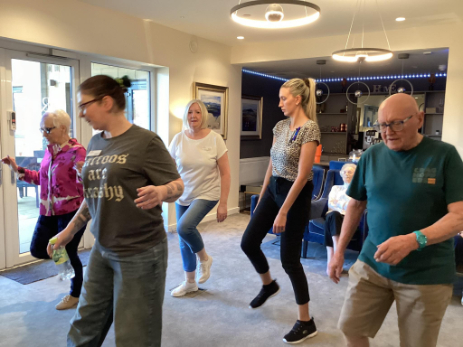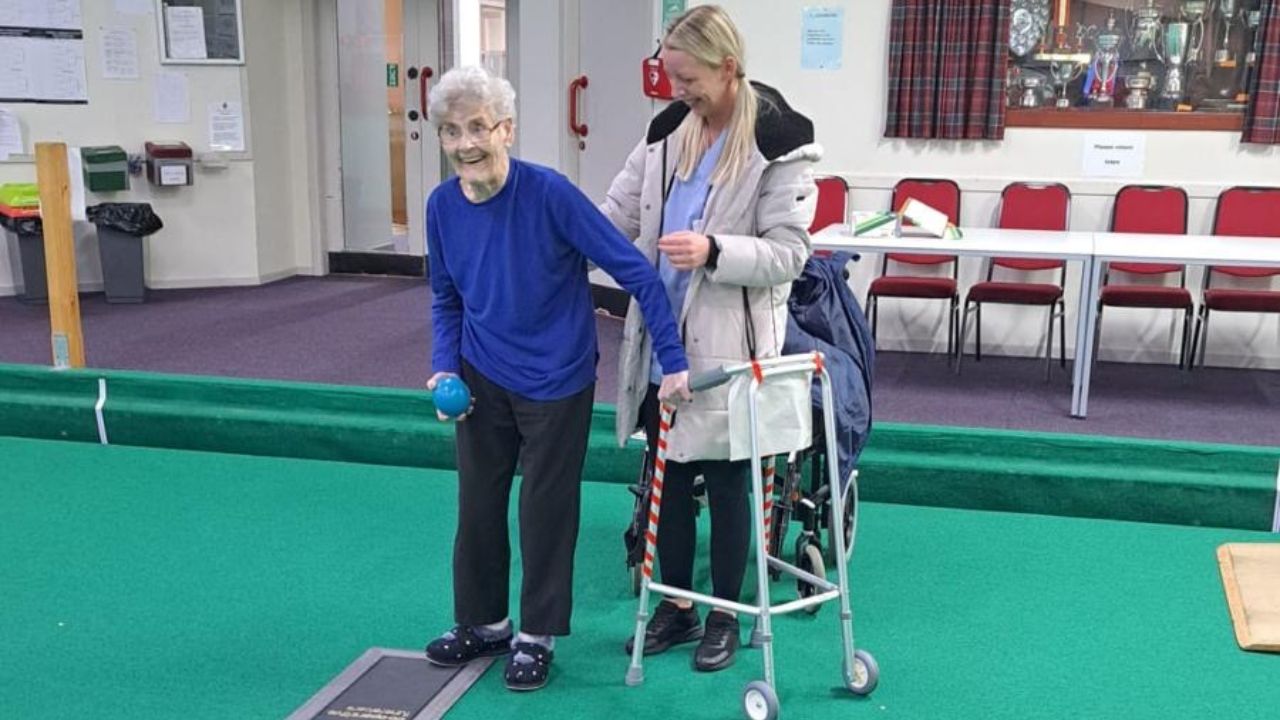How to Make a Care Home Room Feel More Homely
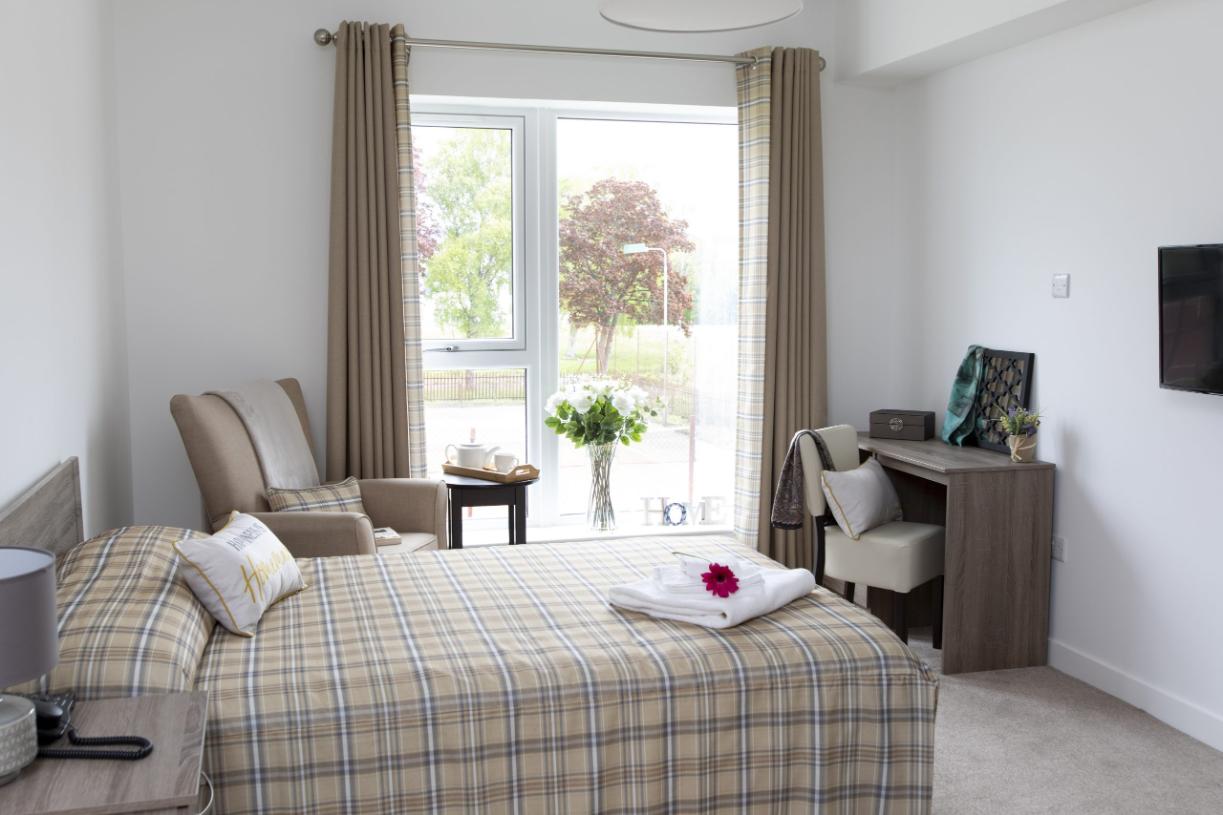
When moving into a care home, one of the most important steps toward settling in is ensuring the new space feels like home. For many residents, the transition into a new environment can be emotional. Familiar surroundings, personal touches, and comforting details all play a vital role in supporting a resident’s emotional wellbeing and helping them adjust.
At Roselea Court Care Home, we believe that every room should be a reflection of the person who lives there. It’s not just a room — it’s a sanctuary filled with cherished memories, warmth, and personality. If you’re wondering how to make a care home room feel more homely, we’ve put together some practical tips to help create a comfortable, inviting space that promotes happiness, security, and overall well being.
1. Surround the Space with Familiar Items
The easiest way to help a resident feel at home is to bring along familiar items and personal belongings that hold sentimental value. This might include framed family photos, ornaments, or a favourite chair from their own home. These treasured pieces create a sense of continuity and comfort, turning a new room into a familiar space that evokes happy memories.
Encouraging residents to bring furniture — even a small side table, lamp, or bedside tables — can make a huge difference. Familiar textures, shapes, and familiar smells instantly remind them of home, helping to reduce feelings of anxiety and promote relaxation.
At Roselea Court, we welcome residents and their loved ones to personalise their rooms as much as possible, ensuring every space reflects each individual’s life story and interests.
2. Add Personal Touches That Hold Meaning
A homely environment is created through personal touches that celebrate identity and individuality. Displaying photographs in reflective plastic frames, hanging artwork, or arranging a small collection of family heirlooms can bring warmth and familiarity to the space.
For residents living with dementia, memory boxes are a wonderful way to make a room feel more personal. Filled with cherished belongings and items that hold sentimental or emotional value, they not only spark conversations but also evoke memories and provide reassurance in a new environment.
Simple touches, like displaying a favourite book collection or keeping a much-loved blanket close by, help make a care home room feel safe, familiar, and deeply personal.
3. Incorporate Soft Furnishings for a Comforting Environment
A care home room should feel warm and welcoming — not sterile or clinical. Adding soft furnishings such as throw pillows, cushions, rugs, and curtains can create a cosy and comforting environment. Using own bedding and own sheets from home adds a layer of familiarity and comfort, often accompanied by familiar scents that help residents feel relaxed.
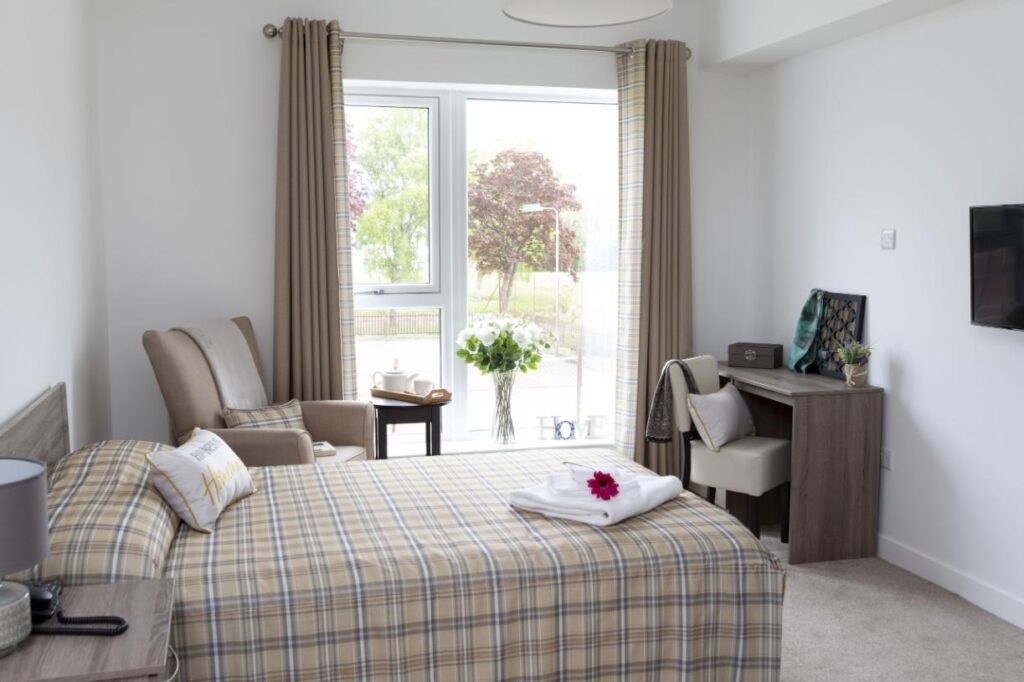
Opting for textures and fabrics in the resident’s favourite colours can make a big difference to how the room feels. Warm tones and soft materials help create a calming atmosphere that contributes to emotional well being. Avoiding harsh lighting and shiny surfaces ensures a gentle, soothing aesthetic — perfect for promoting peace and overall wellbeing.
4. Make Use of Natural Light and Natural Beauty
Access to natural light can have a positive impact on both mood and health. Positioning furniture so that residents can enjoy sunlight during the day — or see the outdoors from their bed or favourite chair — can bring a sense of openness and connection with natural beauty.
Encouraging small touches of nature, like adding potted plants or silk flowers, can brighten the room without requiring maintenance. These details create an inviting space that brings joy and vitality into daily life. At Roselea Court, many of our rooms overlook peaceful outdoor areas, allowing residents to enjoy nature’s beauty from the comfort of their personal space.
5. Use Familiar Scents to Evoke Happy Memories
Smell is one of the most powerful senses for memory and comfort. Incorporating familiar scents can help transform a new room into a truly familiar space. Using scented candles (under supervision), air fresheners, or even a resident’s preferred soap or perfume can help recreate the smells of their own home.
These scents can evoke memories, reduce stress, and promote relaxation, all of which contribute to overall well being. For example, lavender can create a calming atmosphere, while citrus scents can energise and uplift. The right fragrance can fill the air with familiar smells that bring comfort and warmth.
6. Create Comfort Through Sound and Background Noise
Sound also plays a big part in creating a homely feel. A small radio or CD player can bring familiar music into the space, providing gentle background noise that can soothe or stimulate. Hearing favourite songs or sounds can spark conversations, evoke memories, and bring a real sense of comfort.
For many residents, music has deep emotional value. It reminds them of significant life moments or loved ones, helping to create a strong emotional connection with their surroundings. At Roselea Court, we often find that sharing music together helps residents feel more at ease and connected.
7. Reflect the Resident’s Personality and Interests
Every resident is unique, with different tastes and preferences. A truly homely environment should reflect those individual preferences. Whether it’s decorating with photos of pets, displaying travel souvenirs, or showcasing crafts and hobbies, these details help turn a care home room into a meaningful reflection of the person who lives there.
Encouraging residents to arrange their personal space according to their routines and comfort levels also promotes independence. Being able to decide where furniture goes, or which side of the bed they prefer to sleep on, reinforces a sense of control and ownership over their surroundings.
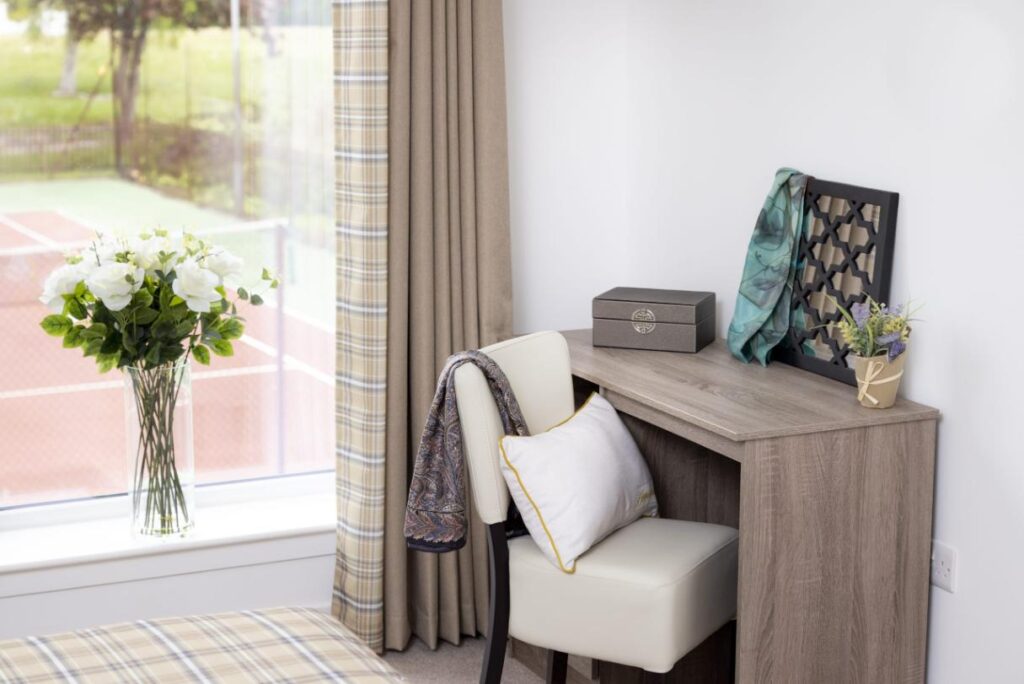
8. Bring Warmth with Light and Colour
Lighting has a powerful effect on how a room feels. Soft, warm-toned lights help create a welcoming environment and a sense of security. Using lamps or dimmable lights instead of harsh overhead fixtures can help reduce stress and promote restfulness.
Decorating with the resident’s favourite colours adds vibrancy and personality. Colours that brings joy or promote relaxation, such as pastel blues or calming greens, can make the room feel more like home. Adding small touches like patterned lampshades, throw pillows, or a textured rug can help personalise the space even further.
9. Balance Practicality with Comfort
While comfort is key, it’s also important to maintain safety and practicality. Choosing furniture that is both comfortable and accessible ensures residents can move freely around their personal space. Avoid clutter and ensure walkways are clear to prevent falls.
Using reflective plastic frames instead of glass helps display photos safely, and placing items within easy reach allows residents to enjoy their belongings without difficulty. This balance of safety and style creates a homely feel while ensuring a safe home environment that supports mobility and independence.
10. Encourage Family and Loved Ones to Get Involved
The presence of family members and loved ones adds immeasurable comfort. Inviting relatives to help decorate their loved one’s room not only makes the process more enjoyable but also ensures the space reflects meaningful details and cherished belongings.
Family members might bring personal items such as photo albums, family heirlooms, or gifts that hold sentimental value. Spending time together in the room — enjoying a hot drink, chatting, or listening to music — helps strengthen bonds and create happy memories.
At Roselea Court, we actively encourage families to spend time personalising each room, ensuring it becomes a familiar space where their loved one feels comfortable and secure.
11. Celebrate the Small Details
Sometimes it’s the small details that make the biggest difference. Adding a soft blanket, displaying a calendar with family birthdays, or including a vase of silk flowers can make a room feel loved and lived in.
Even a simple act, like hanging pictures of familiar faces, can make residents feel more connected and content. These gestures might seem minor, but they contribute to the overall quality of life and the homely feel that helps residents truly settle in.
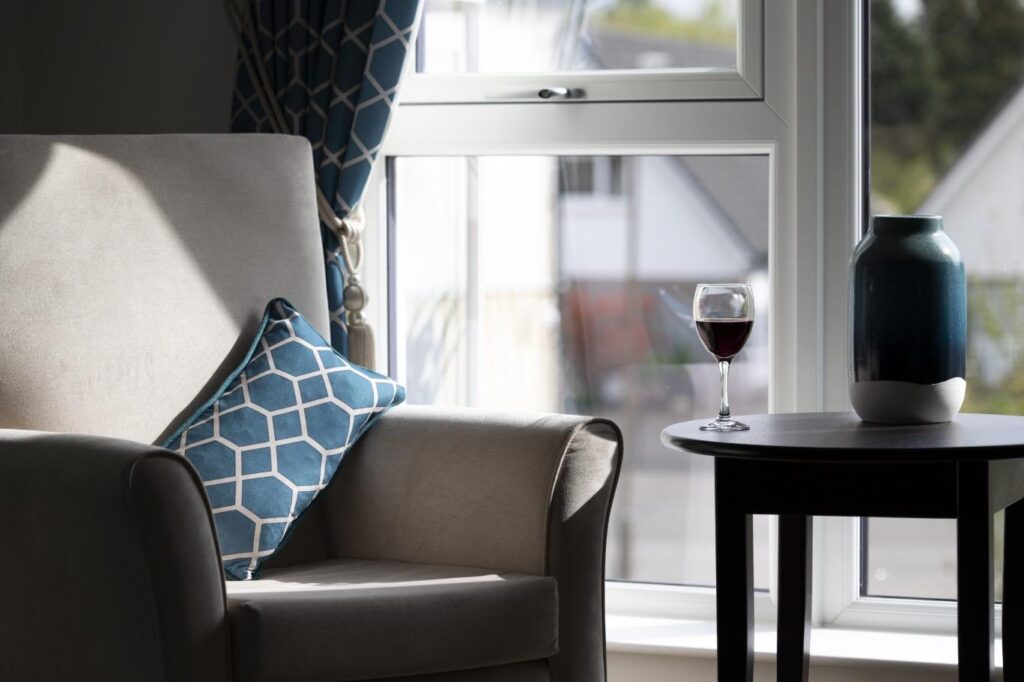
12. Create a Space That Promotes Wellbeing and Joy
A truly homely environment supports both physical comfort and emotional wellbeing. At Roselea Court, we’re dedicated to providing residents with a welcoming touch in every detail — from the décor to the atmosphere.
Our goal is always to make sure residents not only live comfortably but thrive. Every care home room at Roselea Court is designed to be personal, warm, and inviting — a place where residents feel safe, valued, and truly at home.
We understand that a new environment can feel daunting at first, but with care, attention, and love, each room becomes more than just a space — it becomes part of a new chapter filled with cherished memories and a real sense of belonging.
Creating a Real Sense of Home
Knowing how to make a care home room feel more homely can make a world of difference to someone settling into a nursing home or residential care setting. Surrounding residents with familiar items, familiar scents, and personal touches helps them adjust and feel at ease.
By blending soft furnishings, favourite colours, cherished belongings, and the presence of loved ones, it’s possible to create a welcoming environment that promotes overall well being and brings joy every day.
At Roselea Court Care Home, we take great pride in offering exceptional care in a setting that feels like home. Every detail — from natural light and décor to background noise and fragrance — is designed to ensure comfort, dignity, and a lasting homely feel.
If you’d like to learn more about how we help residents feel at home and supported in their surroundings, please contact our friendly team today. We’d be delighted to show you around and help you experience the warmth and care that define life at Roselea Court.



